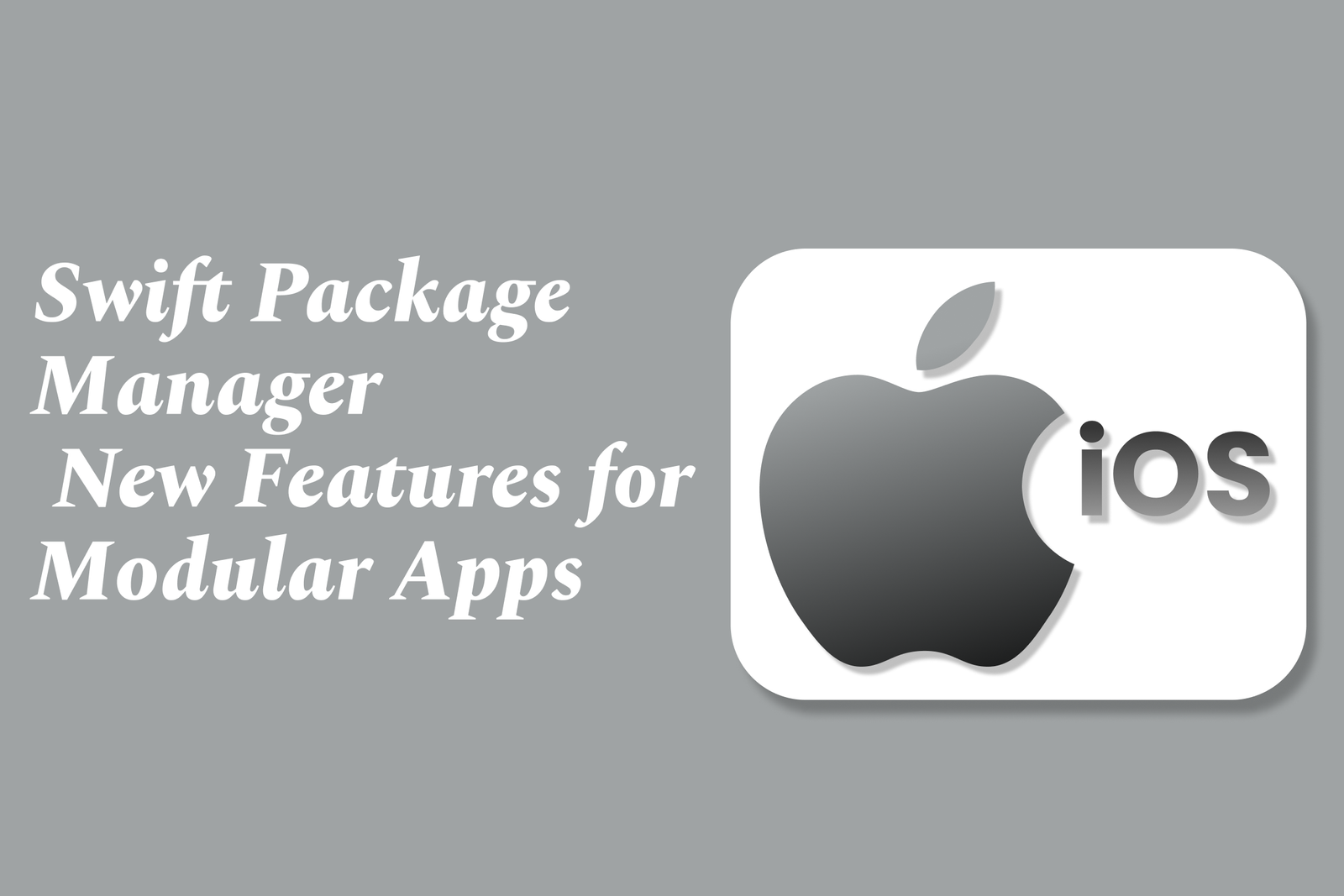Swift Package Manager: New Features for Modular Apps
Swift Package Manager streamlines modular app development by managing dependencies, supporting reusable Swift modules, and integrating seamlessly with SwiftUI. New features enhance build automation, resource handling, and package organization for scalable, maintainable Swift apps.
Swift Package Manager: New Features for Modular Apps
1 ) Introduction to Swift Package Manager (SPM)
Swift Package Manager is Apple’s official tool for managing Swift code dependencies, integrated into the Swift build system.
It automates downloading, compiling, and linking of dependencies, simplifying complex project setups.
Available since Swift 3.0, it supports modular code organization through packages, targets, and products.
2 ) Core Concepts in Swift Packages
Modules: Encapsulate Swift code under a namespace, supporting code reuse and access control.
Packages: Contain Swift source files and a manifest (Package.swift) defining the package details and dependencies.
Targets: Define build units within packages, each producing a product like a library or an executable.
Products: Libraries (importable modules) or executables (runnable programs).
Dependencies: Recursive graph of external packages required by a target, automatically managed by SPM.
3 ) Advantages of Modularizing iOS Apps with SPM
Modularization breaks down large projects into independent, self contained modules.
Benefits include improved build times, easier testing, autonomous team development, and faster iteration.
SPM handles dependency versioning, retrieval, and build integration smoothly.
First party Apple support ensures seamless compatibility and integration with Swift and Xcode.
4 ) Using SwiftUI with Swift Package Manager for Modularization
Combining SwiftUI and SPM enables declarative UI design with modular architecture.
Developers can create reusable UI modules and interface/implementation separation.
Supports dependency injection and unit testing within modularized components.
Facilitates transitioning from vertical to horizontal module dependencies for better architecture.
5 ) Practical Techniques and Enhancements
Use SPM plugins (e.g., SwiftGen) to automate resource generation per module, enhancing maintainability.
Employ the @_exported import attribute to bundle commonly used dependencies in a single module, reducing repetitive import statements.
Organize modules thoughtfully to prevent circular dependencies and improve code discoverability.
Structuring packages with clear versioning and API boundaries supports long term maintainability.
6 ) Challenges and Community Discussions
Custom build configurations beyond Debug and Release are not natively supported in Swift packages, limiting some testing scenarios.
Developers discuss potential improvements, such as adding support for alternative build configurations.
Strategies exist for workarounds like using environment variables but require careful planning.
7 ) Best Practices in Modular Architecture with SPM
Define packages based on versioning and API stability needs.
Organize targets and products to represent logical units of functionality.
Validate boundaries to reduce interdependence and avoid “spaghetti code.”
Prefer grouping related imports into core dependency modules for clarity and convenience.
8 ) Conclusion
Swift Package Manager has evolved to significantly support modular app development, especially for iOS projects.
Its integration with SwiftUI, along with community driven techniques, empowers developers to build scalable, maintainable, and high performance native Swift applications.
Ongoing enhancements and discussions promise even greater flexibility and power for modular software design in the Swift ecosystem.
https://justacademy.in/news-detail/new-features-in-flutter-4.0-stable
https://justacademy.in/news-detail/flutter-forward-2025-recap
https://justacademy.in/news-detail/the-rise-of-react-native-in-iot-applications
https://justacademy.in/news-detail/react-native?s-secret-weapon:-faster-app-load-times
https://justacademy.in/news-detail/react-native-vs-flutter:-developer-opinions-from-2025
Related Posts
In 2025, top Angular libraries offer modern, feature-rich components and tools for building dynamic web apps. From powerful data grids to low-code platforms like UI Bakery, these libraries enhance development speed, UI design, and scalability, making them essential for Angular developers.
Migrating from AngularJS to Angular 17 involves gradually upgrading your app by running both frameworks together using tools like ngUpgrade, rewriting components in TypeScript, and adopting Angular’s modern architecture to enhance performance, maintainability, and long-term support.
Angular state management tools help organize and handle app data efficiently, improving scalability and maintainability. Popular options include NgRx for robust, RxJS-based patterns, and newer Signal Store solutions that offer simpler, reactive approaches integrated tightly with Angular’s latest features.
RxJS in Angular empowers developers to manage asynchronous data streams with powerful operators like `forkJoin`, `combineLatest`, and `zip`. Mastering these key operators in 2025 is essential for building efficient, reactive applications that handle complex event sequences seamlessly.
Angular performance optimization in 2025 focuses on improving app speed and responsiveness by using techniques like OnPush change detection, lazy loading, efficient data caching, and AOT compilation. These practices reduce load times, enhance user experience, and ensure scalable, fast Angular applications.
In 2025, Angular remains preferred for large-scale, enterprise apps with its robust, all-in-one framework, while Vue attracts developers seeking simplicity and fast development for smaller projects. Both frameworks excel, with choice driven by project needs and team expertise.
Angular Signals are a new reactive primitive in Angular 16 that enable fine-grained, efficient change detection by automatically tracking dependencies and updating only affected parts of the UI. They simplify state management and boost app performance, revolutionizing Angular's reactivity model.
Angular interview questions to prepare in 2025 focus on core concepts like components, directives, data binding, routing, and dependency injection, along with TypeScript mastery and latest Angular features to ensure strong practical knowledge for building scalable, efficient web applications.
AngularJS reached its official end of support in January 2022, meaning no further updates or security patches. To ensure app security and performance, developers should consider migrating to modern Angular versions or seek third-party long-term support options if immediate migration isn’t possible.
The Angular Roadmap 2025 highlights upcoming features focused on improving developer experience and performance, including zoneless Angular, Signals integration, enhanced Forms, async data handling, improved HMR, and expanded Angular Material/CDK enhancements, driving modern, efficient web app development.










